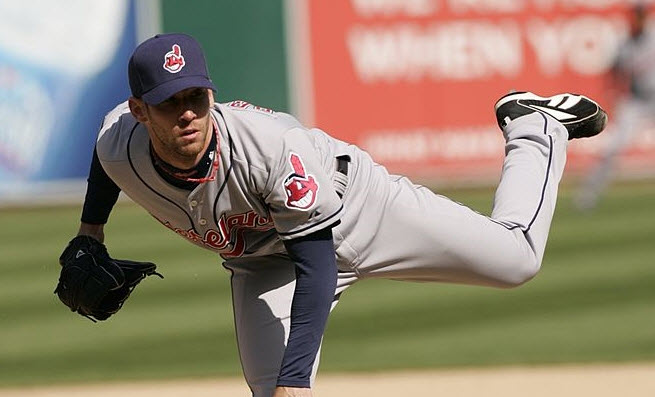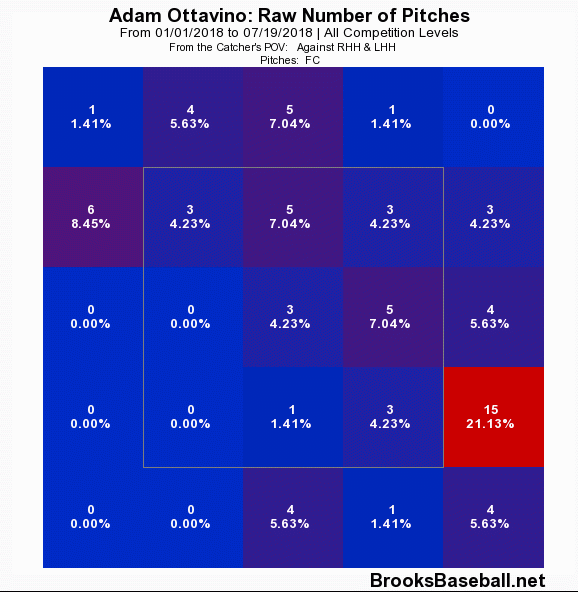How Pitchers are Leveraging Technology to Get Better

The game of baseball has always been categorized as “traditional”. A game that has long been rooted to its values and unwritten rules, there has been very little change since its inception. Try to mention a new rule or strategy to the game and it’s hardly ever accepted at first glance. However, baseball has made quite the stride to catch up with its counter sports over the past decade in terms of data usage and technological advancement. With technology, we’ve seen the emergence of a new age of strategy and training. In this two-part series, we’ll discuss some of the ways technology has impacted the game by enhancing player training regimens and, in turn, taking the sport of baseball to a whole other level. This week we take a deep dive into how pitchers have utilized some new tools and how their training translates to what we see on the mound.
When SportVision first introduced PITCHf/x in 2006, a whole new world of data was immediately thrust into front offices for managers and analysts alike to utilize. It taught us common folk what vertical and horizontal break on a pitch was, percentages of pitches that were thrown in what counts, and how often a pitcher throws a certain pitch for a strike. Since then, technology has only become more prevalent within Major League organizations and training facilities. Now, every Major League park is equipped with the new version of PITCHf/x called Statcast. While these devices made their hallmark within the game, they are often utilized solely by front office analysists expunging data from SQL tables and programs of the like. However, recent development in technology has allowed players to gain a personalized and – most importantly – actionable experience for development during training.
We would be remiss to not mention Trevor Bauer when talking about technology in baseball. Trevor is known for his data-driven approach towards his craft. He’s always been an intellectual thinker when it comes to the physics of the game and has some radical viewpoints on how player development should be handled within Major League clubs. Yes, he’s also that guy who slashed his finger open during the World Series from building a drone. Nevertheless, Bauer continues to quiet his critics with his stellar performance on the mound the past two seasons. One area of his game that has improved immensely has been his strikeout totals. With 196 strikeouts total just a season ago, Bauer currently sits at 87%(!!) of that number at the All-Star break with 175 strikeouts this season. How did Bauer get to where he is now from just a season ago? The reality is that this is a result of the culmination of different training aspects that contributes to the holistic approach to athlete performance (i.e. proper nutrition, hydration, recovery, etc.). However, for the sake of time, well focus on his use of high-speed cameras and markers instead.
Trevor Bauer will spend his time training during the off-season at Driveline, a data-driven baseball facility located in Kent, Washington. There, Trevor breaks down his pitching mechanics and tries to design a new pitch. One of his practices, in order to see spin-axis and grip, is coloring one side of the ball while using high-speed cameras that focus in on his hand at ball release. The video allows Bauer to see how the ball rotates and if his grip can be improved in order to avoid any protruding of the spin-rate of the ball.
With this practice, Bauer is able to physically see how his pitch is leaving his hand as well as the rotation of the pitch. He then connects the dots with a high-tech device that allows him to objectively quantify spin-rate, spin-axis, and efficiently develop a pitch that fits in with the rest of his repertoire. The goal is to effectively ‘tunnel’ pitches that have different breaking points to keep the hitter guessing (we actually spoke about this in a previous article highlighting Vince Velasquez and his curveball usage).
That same high-tech device caught the eye of Rockies reliever Adam Ottavino, who purchased his own in hopes of developing a pitch that could induce more strikes out of the strike-zone. The device, known as Rapsodo, measures spin-rate, spin efficiency, and provides a 3D view of the ball (among other things). As you can imagine, this is an invaluable complement to pitchers when trying to develop pitches or quantify a bullpen session. As a result from spending time with Rapsodo, Adam wound up developing a pitch that was in between his fastball and his slider: a cutter. Looking at the figure below, I think it’s safe to say that Adam has stuck with his plan of throwing outside of the strike zone.
Ottavino currently sits at the season’s half-way point with a 1.62 ERA with 67 strikeouts in 44.1 innings pitched.
Craig Breslow, a reliever who split time on the Blue Jays and Twins last season, stated that he used a wearable device that monitors stress on the UCL. When throwing with the sleeve, he noticed that his velocity went up when he lowered his arm slot. Not only that, but the stress on his elbow decreased simultaneously. In part with his use with other devices, he was essentially able to discover the most efficient arm slot for him to throw with. In fact, every thrower is different, and therefore will yield different deliveries that are optimized for their body type. One way athletes have done this is by using high-speed motion-capture cameras (similar to how video games are made). This allows players to see a full kinematic outline of their delivery, giving the player some insight into how he can optimize his delivery patterns to get the most out of their motion while reducing their risk of injury.
As the case has always been with the plethora of data that is available, utilizing these devices can be a bit overwhelming if you don’t know what you’re looking at. However, being able to hone in on what the bulk of data represents and how it can apply to, for example, developing a new pitch, allows for more focused, goal-oriented training. With technology as a compliment, it can lead to unexpected discoveries and allow coaches and players to peel back an extra layer of information, essentially confirming the subjective. These examples are not to suggest that technology is only good for pitchers in three ways; rather, these use cases are merely a snapshot of what technology can provide to a pitcher’s training regimen. Moreover, they prove technology’s existence within the game is warranted.
We’ve certainly come a long way from the days of pitchers coming into Spring Training and throwing off the mound for ten minutes without any goal or intention. While there is still room for improvement, it is refreshing to see the game advancing the way it is. Next week we’ll take a look at how technology has advanced hitting in the second part of our series.
-Mike Lambiaso

















